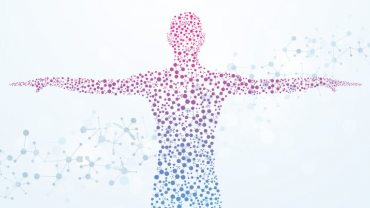
Antibiotics are among the most commonly prescribed drugs among all age groups. From sniffles to sepsis, antibiotics are the gold standard drug of choice. At one time they were considered a miracle drug, but today, we must ask if this “miracle” has become a Trojan horse.
The birth of antibiotics is often cited with the accidental discovery of the antibacterial properties of the mold, Penicillium, in 1929 by Alexander Fleming. Penicillin was mass produced and distributed by 1945, with the caution by Fleming himself of potential resistance to it if too little was used for too short a treatment period. Fleming’s discovery saved thousands of lives and paved the way for other researchers to begin discovering various classes of antibiotics during the 1950s – 1970s. After this golden age of discovery, only modifications of previous antibiotic classes were announced.
The widespread use of antibiotics has undoubtedly saved thousands of lives from basic pathogens; however, storm clouds have been brewing and we are just now starting to see the consequences of unbridled antibiotic distribution. Pathogen resistance is certainly a fearful predicament and one which has already started raining down upon us. However, another less-well-known, but perhaps, equally devastating consequence is the altering of the human microbiome.
The human microbiome interacts with some of our most critical pathways, including the immune system, metabolism, digestion, detoxification, and mental health. Consequentially, a disturbed microbiome is not only ineffective in its own tasks, but can also lead to the dismantling of other connected systems that maintain general health and wellness.
The human microbiome is exposed to antibiotics through medical use, agricultural use, food and environmental contamination. Constant exposure has inevitably led to the presence of resistant genes that become pooled in the microbe-rich environment of the microbiome. One treatment course of antibiotics can reduce the abundance, richness, diversity and evenness of 30 percent of the gut microbiota. Antibiotics damage the cell membranes of microbiota and affect the gene expression, protein activity, communication, and overall metabolism of the microbes. These changes are drivers for multiple diseases. The microbiome will attempt to reestablish homeostasis, but resilient effects of the antibiotics often remain. Subsequent antibiotic treatment courses cause accumulated effects until the microbiome is unable to recover.
Increased Infections
Increased susceptibility to infections is a threat of a disrupted microbiome. Reduced quantities of native microbes leaves the terrain vulnerable to colonization by opportunistic and pathogenic species. Perhaps the most well-known example of this phenomenon is antibiotic-associated diarrheas stemming from an overgrowth of Klebsiella pneumoniae, Staphylococcus aureus and Clostridium difficile. A healthy microbiome acts as a barrier between pathogens and the circulatory system. When that barrier is weak and infected, intestinal pathogens can invade the bloodstream, leading to more dangerous systemic infections.
Compromised Immunity
Native microbiota modulate both innate and adaptive immune responses. Loss of native microbial competition increases the growth rate of pathogenic species, which stimulates the immune system and reduces the capacity to fight infections. Antibiotics affect lymphoid tissue development, T cell differentiation, neutrophil priming, production of antibacterials, and cytokine release. Atopic, inflammatory and autoimmune diseases have been linked to alterations in the gut microbiota. The risks of developing immune-mediated health conditions is greater when microbiome disturbances begin in infancy or early childhood when the immune system is still maturing.
Gastrointestinal Conditions
Inflammation mediated by alterations in the gut microbiome have been directly associated with inflammatory gut conditions, including inflammatory bowel disease (Crohn’s disease and ulcerative colitis), irritable bowel syndrome, and necrotizing enterocolitis. These conditions often follow a reduction in Firmicutes and an increase in gram-negative bacteria often responsible for inflammatory processes.
Metabolic Conditions
Altered genetic expression and metabolic function of the microbiome is associated with metabolic derangements such as obesity, insulin resistance and dyslipidemia. Antibiotics disrupt enzymatic activity of native bacteria that allow them to metabolize carbohydrates, leading to glucose and fatty acid dysregulation. Triggered inflammatory processes exacerbate the situation and increase the risk of developing diabetes and cardiovascular disease. A reduction in short-chain fatty acid production from native microbiota also encourages inflammation and increase the risk of various metabolic conditions.
Mental Health
Alterations in the gut microbiome associated with antibiotic use has also been linked to increased risks of depression and anxiety, autism spectrum disorders and schizophrenia. Native microbiota produce neurotransmitters, including serotonin. The microbiome closely interacts with the brain through the vagus nerve and immune system. Systemic, dysbiosis-induced inflammation can exacerbate mental health conditions. Amino acid metabolism and short-chain fatty acid production by native microbes influence brain development, function, and behavior.
Starting at Birth
Antibiotic-induced microbiome disturbances are seen as early as birth. Mothers who received antibiotics during their pregnancy and infants who received antibiotics within the few first days after birth show attenuation of Bifidobacterium and marked increases of Proteobacteria. Infants are colonized with their mother’s microbiota during vaginal delivery and breastfeeding. With the increased number of women prescribed antibiotics during pregnancy and possessing a disturbed microbiome, one must wonder if the next generation even has a chance for a health microbiome. To turn the tide on this storm, we must be more vigilant about addressing the microbiome through discriminating antibiotic use and re-administering native microbiota species through high-dose, multi-strain probiotic supplementation.
By Nicole Spear, MS, CNS